Everything You Need to Know Before Buying an Estate Engagement Ring
Purchasing a vintage or antique ring is a beautiful way to give life to a pre-loved jewel.
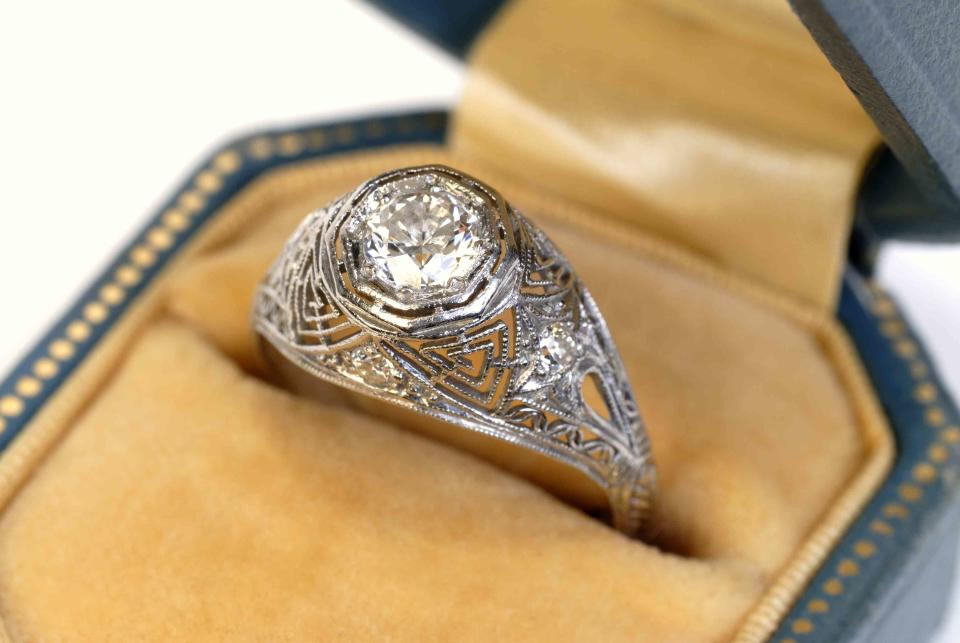
Robert Kirk / Getty
A sparkling new solitaire may be stunning, but estate engagement rings have a one-of-a-kind appeal that is only rising in popularity. Thanks to an increased interest in all things old and full of character, more couples are choosing to say "I do" with a ring that’s walked down the aisle once before. From dramatic Art Deco settings to Victorian rings with flowery stones, these rings have a storied past that you can’t find in newer rings.
Vintage and antique engagement rings are a cost-effective (and sustainable!) way to purchase a sparkling stone. You’ll often find lower price points on rings when they’re sold secondhand, even if the quality of the diamond and the stones is on par with some of the most high-end new rings at jewelry stores.
But the process of buying a secondhand ring can be intimidating, and it’s not always straightforward. Here’s what two vintage jewelry experts say you need to know before buying an estate ring.
Meet Our Expert
Anthony Barzilay Freund, editorial director and director of fine art at 1stDibs
Suzanne Martinez, co-owner of Lang Antique & Estate Jewelry
Related: 8 Engagement Ring Trends, From Lab-Grown Diamonds to Bold Bezels
What to Consider When Buying an Estate Ring
When looking at these rings, Anthony Barzilay Freund, editorial director and director of fine art at 1stDibs, says that there are a few things to keep in mind as you start to shop.
Vintage vs. Antique vs. Estate
While vintage, antique, and estate all indicate that the item is pre-loved, there is a difference in these three terms. "Vintage can be from the 1960s to the 1990s," he says. "Antique and estate [rings] are over 100 years old, and we saw estate ring sales go up 14 percent year-over-year from 2022 to 2023." Generally speaking, an estate ring is often used as an umbrella term for any ring that is pre-owned.
Style and Period
Another factor to consider is the time period you're looking for. And while it may be the look, not the period, that is most important to you, understanding the different eras helps you know where to start your search. Many couples are gravitating toward one specific style, though there is a range to choose from. "Art Deco remains our top seller," says Suzanne Martinez, co-owner of Lang Antique & Estate Jewelry. "With the rise in popularity of yellow gold starting a few years ago, we are also selling more Victorian diamond rings for engagement."
Unique Stones
Lastly, many antique and vintage rings were often set with stones other than diamonds—think gemstones and pearls over that classic diamond solitaire that we think of today. Or, these rings were set with a mixture of stones, mixing diamonds with sapphires, rubies, and emeralds. It helps to be open to looking at rings with unique combinations of colors, gems, and stones.
Related: These Stunning Pearl Engagement Rings Celebrate One of the World's Oldest Gemstones
Common Styles of Antique and Vintage Rings
Before you start looking in earnest, you'll want to have at least a basic understanding of the most common periods that antique and vintage rings fall into.
Georgian
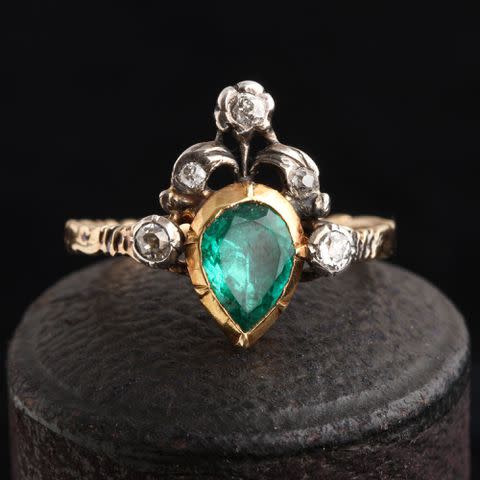
Courtesy of Erica Weiner
Georgian rings are often the oldest types of rings you’ll find in the United States, dating from 1714 to 1837. This style is ornate with abundant and intricate shapes and stones. There was a definite "more is more" design philosophy when it came to this style, and you'll often find mixed stones like rubies with diamonds and pearls.
Victorian
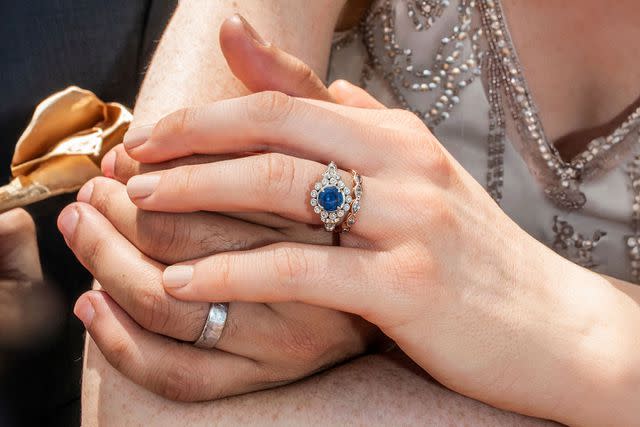
Angela Cappetta / Getty Images
Victorian rings, which typically are dated from 1837-1901, represent a sentimental and often melodramatic time in history. This is the era that gave us mourning jewelry and oddities. The rings of this period often have hand-carved rose-cut diamonds, floral-inspired settings, sapphires, rubies, and yellow gold.
Edwardian
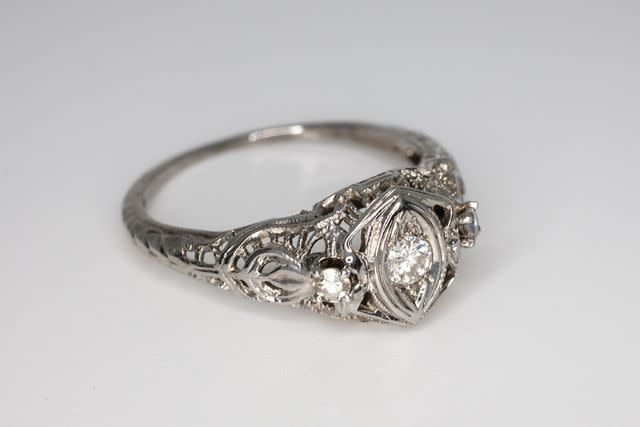
Anna Nelidova / Getty Images
Edwardian rings represent a brief period from 1901 through 1910 when platinum was used to make delicate, dainty filigrees that held hand-cut Old European diamonds.
Art Deco
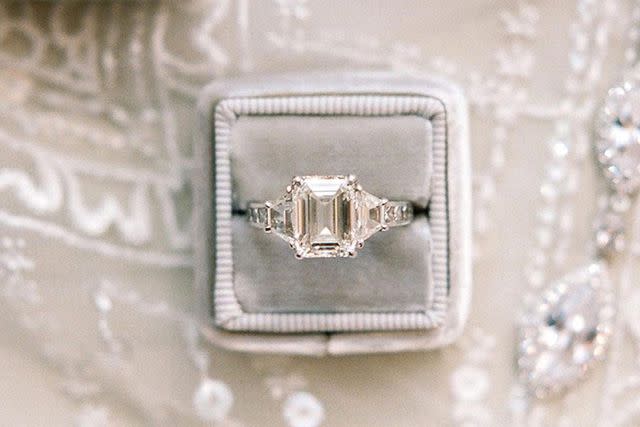
Artful drama arrived in 1915 when Art Deco hit the scene. Geometric, sculptural settings with sharp lines, symmetrical shapes, and diamonds set next to sapphires, rubies, and emeralds make these some of the most striking antique rings on the market.
Midcentury
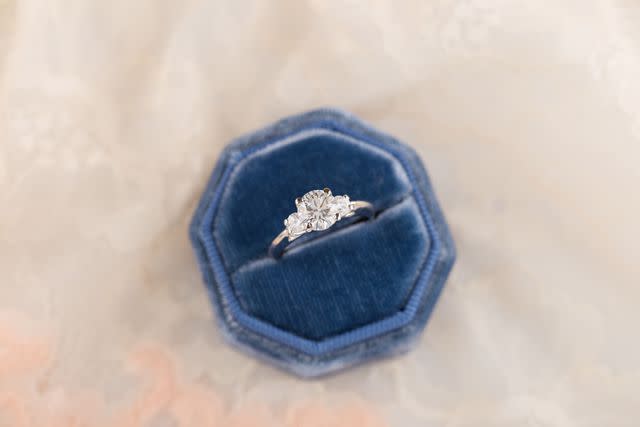
TorriPhoto / Getty Images
Midcentury engagement rings, which were seen from the 1950s through the 1980s, feature less detailed settings, with three-stone settings, side stones, and sleek bands soaring in popularity. This is when you see the classic solitaire make its way onto the scene. You’ll often find sweet, simple styles dated to this era.
How to Assess the Condition of an Estate Ring
First things first—carefully examine the ring for signs of wear and tear. If a ring was well loved throughout its lifetime, there will be wear. That’s a fact of life, particularly when you’re looking at rings that have seen decades and centuries. But that doesn’t have to be the end of its love story. "Prongs can be worn down and may need metal added," says Martinez. "Diamonds can have chips or be abraded and need repair."
Barzilay Freund also explains that even though these rings are secondhand, that shouldn’t impact their current condition dramatically. Any ring made of high-quality materials should remain in or be restored to pristine condition, regardless of age. "Check for repairs—signs of soldering or replaced stones can adversely affect a ring’s value," he says.
However, all that glitters isn’t always gold. "Sometimes, unfortunately, there are cracks that cannot be repaired," says Martinez. She explains that many old platinum rings were repaired with white gold and cannot be restored because of how present-day lasers respond to metals. In these cases, the integrity of the piece could be threatened, and the repair isn’t worth it. Having the ring assessed by an expert at the beginning can avoid this heartache later on.
Where to Buy Estate Rings
When you’re looking to buy an estate ring, make sure you go to a reputable source or have an expert that you can take the ring to for an appraisal (with the ability to return it if something fishy comes up!).
Online marketplaces and websites specializing in older jewelry are a good place to start, particularly if you want to ogle over the breadth of rings available. 1st Dibs and Sotheby’s both have extensive websites that are easy to filter by era, stone, metal, and more. You can also look at antique jewelry stores with a large online presence like Lang Antique & Estate Jewelry or Wilson Estate Jewelry. Of course, there are likely local antique stores in your area that are a wonderful way to see pieces in person, and often, local jewelry stores will carry a selection of antique rings.
Auction houses, like Alex Cooper Auctioneers, are another great place to find unique second-hand rings. And, if you’re feeling like going on a hunt, try estate sales, flea markets, and even Etsy. Estatesales.net can help you locate exactly where to start.
Related: The 13 Best Places to Buy an Engagement Ring Online
How to Determine Authenticity
Barzilay Freund advises only buying antique and vintage rings from a reputable dealer or vetted marketplace. "For high-priced diamonds and gemstones, ask for certificates of authenticity from reputable laboratories," he says. "Stamps and hallmarks are another way to verify a piece’s authenticity and age." Though, he notes that if a ring has been resized, the mark may have been removed.
"I recommend getting high-level laboratory reports for grading and identifying diamonds and gemstones," says Martinez. "The Gemological Institute of America (GIA), American Gemological Laboratories (AGL), and Stone Group Laboratories (SGL) are well-known labs." She adds that it’s critical to look for an appraiser who knows antique and vintage jewelry and, typically, that will be stated in their credentials. They’ll know what to look for and how to assess the condition of your 100-year-old ring in light of it being 2024.
Tips for Buying an Estate Ring
Keep these tips in mind before you head out on your shopping trip for a vintage or antique engagement ring.
Know That Older Rings Feature Hand-Cut Diamonds
When looking at these older rings, remember that their diamonds weren’t cut with the same technology, which lends a beautiful, tactile quality to the stone. "Antique diamonds were cut by hand, and you can sense the human touch. They’re not perfectly symmetrical or as brilliant as modern cuts," says Barzilay Freund. "Their proportions are deeper, and they emit a warm light, especially in candlelight. They are usually warmer in color as well."
Martinez notes that with these hand-cut diamonds, like Old European cut, you can choose a diamond that speaks to you—no two diamonds are the same. "The diamonds are graded for color and clarity just as any diamond," says Martinez. "The mines producing diamonds between 1880 and 1930 tended to have a bit more color on average than today’s diamonds—J and K were typical colors,” However, she explains that because of the cut and light patterning, a K Old European cut diamond will look far whiter than a round brilliant cut diamond that’s also rated K color.
Consider Gemstones That Are Durable
Keep in mind that diamonds aren’t your only option. Diamonds rose in popularity in the 19th century, but it wasn’t until De Beers’ diamond campaign in 1947 that they soared above the other stones. There are engagement rings with incredible colored gemstones throughout the decades—just make sure you choose one that can stand up to daily wear. "If you are going to wear a ring daily, we recommend stones with a Mohs hardness (a scale that measures a stone’s resistance to scratching) of 8 or higher," says Martinez. "Spinel and corundum, which are rubies and sapphires, come in a variety of colors and are hard, durable stones."
Check That the Ring Can Be Sized Appropriately
Lastly, make sure it’s possible to get your ring sized. Not all vintage, antique, or estate rings can be sized, particularly when they have intricate settings or side stones that could be impacted. The ring’s second life depends on the perfect fit, and you want to make sure you don’t buy a ring that can’t be tailored to your left hand.
Related: 4 Easy Ways to Measure Your Ring Size at Home
Read the original article on Martha Stewart.

